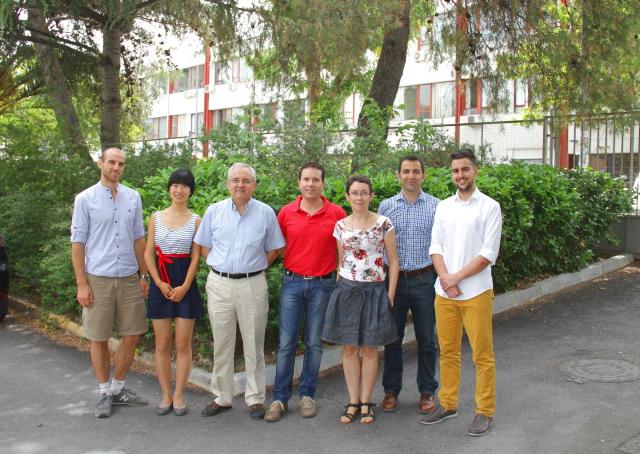Oct 6 2014
Researchers at the University of Granada have designed a new imaging system capable of obtaining up to twelve times more colour information than the human eye and conventional cameras, which implies a total of 36 colour channels.
This important scientific development will facilitate the easy capture of multispectral images in real time, and in the not too distant future it could also be used to develop new asisted vehicle driving systems, identify counterfeit bills and documents or obtain medical images much more accurate than current ones, among many other applications.
 These are the researchers of the Color Imaging Lab Group, from the Optics Department at the University of Granada. Miguel Ángel Martínez Domingo is on the right of the photo. Credit: UGRdivulga
These are the researchers of the Color Imaging Lab Group, from the Optics Department at the University of Granada. Miguel Ángel Martínez Domingo is on the right of the photo. Credit: UGRdivulga
The scientists, from the Color Imaging Lab group at the Optics Department, University of Granada, have designed this new system using a new generation of sensors—which were developed at the Polytechnic University of Milan—in combination with a matrix of multispectral filters to improve their performance.
Colour image sensors can be found in all common types of digital cameras and devices (reflex, automatic, webcams, cell phones, tablets, etc.) and they have an architecture that consists of a monochrome sensor (in black and white), covered with a layer of colour filters (commonly, red, green and blue, also known as RGB). This architecture only extracts information from one of these three colours in each pixel within the image. To extract the information from the rest of colours in each pixel, it is necessary to apply algorithms which in most cases are among manufacturers' best-kept secrets.
According to the PI in this group, Miguel Ángel Martínez Domingo, "the new sensors developed at the Polytechnic University of Milan are called Transverse Field Detectors (TFD) and they are capable of extracting the full colour information from each pixel in the image without the need for a layer of colour filter on them.
In order to do so, they take advantage of a physical phenomenon by virtue of which each photon penetrates at a different depth depending on its wavelength, i.e., its colour. In this way, by collecting these photons at different depths on the silice surface of the sensor, the different channels of colour can be separated without the necessity of filters."
New applications for the TFD
This particular advantage has already been put to good use in previous cases, such as the X3 of Foveon Inc (USA). However, what is new about TDF is the fact that, by applying a transversal electric field of varying and controlled intensity, "we can modulate the depth at which the photons in each colour channel are collected. This offers the possibility of fine tuning the way in which these sensors turn the light they receive into electric signals", according to the PI in this project.
He adds that these type of sensors can facilitate "numerous applications in very different fields of research"
"Multispectral images open an endless series of possibilities within the most diverse fields of science: medical imaging, remote sensing, satellite images, military and defence technology, industrial applications, robotic vision, assisted or automatic driving, and a long etcetera of potential uses which attracts the increasing interest of ever more scientifics and engineers from different specialities. To study the way in which light interacts with our environment can give us very valuable information on its behaviour in a totally innocuous and noninvasive way."
Source: http://www.ugr.es/